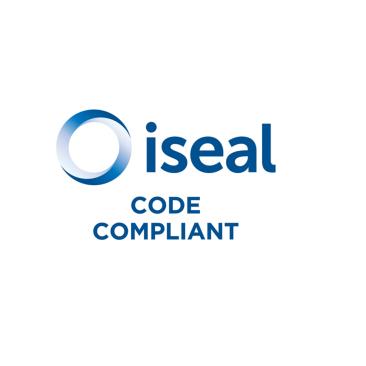
Theory of change
A theory of change (ToC) is the basis from which organizations can identify their intended impacts and the changes they need to make to achieve them. A ToC and the concept of defining an ‘impact chain’ is a way of describing the effectiveness of projects by mapping out the underlying assumptions about how they lead to an intended change. For FSC, this means: how do our efforts improve the environmental, social and economic management of forests? And, how does FSC-certification contribute to longer sustainability objectives through responsible forest management?
FSC’s ToC helps us to articulate our intended impacts, their contribution to wider sustainability goals for the forest sector, and the related pathways and supporting strategies required to achieve FSC‘s vision. This is illustrated in the Roadmap to forest certification impacts.

ISEAL alliance
FSC is a member of the ISEAL Alliance, the global association for social and environmental standards systems. Together with other ISEAL Alliance members, FSC has developed the ISEAL Code of Good Practice for Assessing the Impacts of Social and Environmental Standards.
This code requires FSC, and other ISEAL Alliance members, to clearly state the changes they want to create in their respective fields, and to measure their progress continually. We cooperate closely with other members to revise this code and its related documents as needed.
FAQs
-
What is the FSC Roadmap to Forest Certification Impacts?
FSC Roadmap to Forest Certification Impacts illustrates what change FSC intends to make on the long-term (FSC Vision) and how to get to that change through forest management certification. This journey is outlined by causal relationships among each intended outcome. In other words, it is FSC’s Theory of Change for impacts at the forest level.
This Roadmap finds it roots on FSC Principles & Criteria for Forest Stewardship (STD-01-001 v5-2), known as FSC’s backbone standard.
-
What is this roadmap composed of?
The Roadmap is composed of the following elements:
- Intended outcomes of forest management certification
What does FSC want to achieve with the Principles and Criteria?
- Indicators associated with each intended outcome*
What needs to be measured to track progress against the intended outcomes?
- Causal relationships among successive intended outcomes. This helps understand why desired outcomes have or have not been achieved
What are prerequisites to achieve the intended outcomes?
- Unintended outcomes:
What unintended effects (positive or negative) can be expected?
Clarification note: outcomes must be understood as short- to medium-term effects associated with FSC certification, while impacts are longer-term results, directly or indirectly, resulting from FSC.
-
What is the goal of the roadmap?
This roadmap serves as the foundation to guide Monitoring and Evaluation activities of FSC at the forest level. It is to be used by FSC‘s Monitoring & Evaluation team to further identify priorities in the scope of these activities, develop detailed indicators relevant for specific regions and determine data sources. The goal is then to collect data to assess to which extent the intended outcomes are being achieved and foster insight-driven development of FSC requierements for forest management certification.
The roadmap also aims to support researchers and impact evaluators to guide their research projects. It should facilitate the choice of outcomes and indicators and the development of scientific hypothesis. External independent research about the effects of FSC certification is an important source of knowledge that should likewise help the development of FSC requierements for forest management certification.
Therefore, the roadmap should be continually improved and refined as data are analysed and assumptions about intended outcomes and causal links are tested.
-
Is FSC tracking all the intended outcomes and indicators presented on the Roadmap?
No, as tracking all intended outcomes and indicators would be very costly and complicated with little added effect. As a result, FSC further prioritizes and refines the intended outcomes and indicators that should be implemented as part of Monitoring & Evaluation activities based on global relevance, added value of FSC certification, international consistency of indicators, and practicality of measurement. This focus can be shown using the highlighter „Scope of the Monitoring & Evaluation system“.
-
Is the Roadmap applicable to forests found in all regions and contexts in the World?
The roadmap has been designed to be generic enough to remain relevant for all forests. However, the exercise of developing indicators at a global level is inherently limited by the fact that national forest management standards and local socio-environmental context vary across countries. Many of the suggested outcomes and indicators will need to be further refined to capture the specific effects of FSC certification in various forest contexts across the globe. This will be done for the prioritized scope of the Monitoring and Evaluation activities (see „What is the goal of the roadmap“).
-
Should the roadmap be considered as exhaustive and final?
No. The goal of the roadmap is not to present an exhaustive list of accurate outcomes and indicators for the entire FSC portfolio. Its goal is to illustrate the most important aspects related to the effects of FSC certification. the roadmap serves as a basis to test assumptions about the effects of FSC-certification and causal relationships among intended outcomes. Therefore, it should be continually improved and refined as data are analysed and assumptions about intended outcomes and causal links are tested.
-
What is the feature highlighting items relevant for climate-change mitigation showing?
This highlighter allows selecting all items (Principles, Criteria and Intended Outcomes) that directly influence carbon sequestration benefits. While requirements for outcomes on biodiversity, water management and similar eco-system services are quite explicit in the FSC Principles & Criteria for Forest Stewardship, this is not true for requirements to maintain climate-change mitigation. Given the increasing global recognition of the importance of forests as nature-based solution to combat climate-change, we have added a highlighter to make the climate impact of FSC more visible.